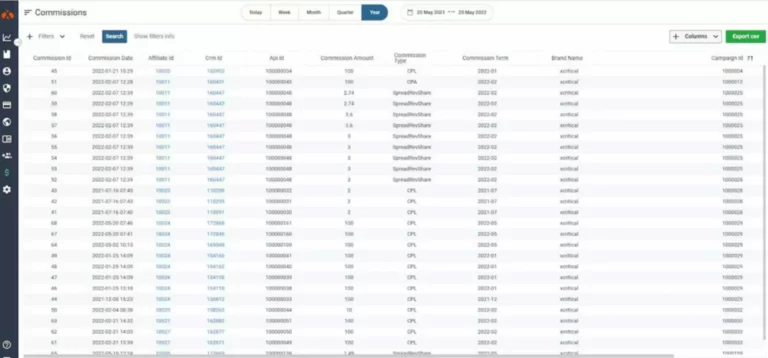Content
Begin by evaluating a company’s financial health using metrics such as earnings per share (EPS), debt-to-equity ratio, and price-to-earnings ratio (P/E). Also, analyse broader economic and sector-specific trends difference between fundamental and technical analysis and assess the quality of management and the company’s competitive position. Fundamental Analysis is typically favoured by investors looking to build a portfolio of quality stocks they intend to hold for an extended period. This method is based on the idea that the stock market may misprice a company in the short term but that the firm’s actual value will be reflected in the stock price over the long term. Investors like Warren Buffett have successfully employed this strategy, focusing on companies with robust basic principles and a solid business model that promises steady growth over years or even decades.
Macroeconomic Factors and Industry Trends
- They would look at the stock’s price chart and apply indicators like moving averages, the Relative Strength Index (RSI), or MACD to predict future price movements.
- Whether you’re looking for the best stocks to swing trade or you want help configuring your asset allocation in retirement, VectorVest can help.
- For instance, market news can have a significant impact on asset prices, irrespective of what your analysis may indicate.
- Fundamental analysis and technical analysis can be combined to provide a comprehensive approach to investing and trading, leveraging the strengths of both methods to make better-informed decisions.
- By taking these factors into account, fundamental analysts can gain a deeper understanding of the forces shaping the market landscape and make more informed investment decisions.
- So, embark on your investment journey with confidence, and let the battle of strategies lead you to triumph in the financial markets.
By understanding and applying both fundamental and technical analysis, investors can make more informed decisions, balancing the insights from a company’s financial health with market trends and timing. Use technical tools to study stock price movements and patterns, applying indicators like moving averages, the RSI, and MACD. These can help you determine optimal trading points and understand market sentiment. Finally, determine crucial entry and exit points by identifying critical support and resistance levels where the stock has historically reacted. For example, a trader analysing Tesla Inc. stock might use technical analysis to identify trends and critical levels. They would look at the stock’s price chart https://www.xcritical.com/ and apply indicators like moving averages, the Relative Strength Index (RSI), or MACD to predict future price movements.
Advantages of Fundamental Analysis

When you’re ready, switch to the live account and start trading for real. Maintain a diversified portfolio, adhere Proof of identity (blockchain consensus) strictly to your trading plans to avoid emotional decisions, and commit to ongoing education to keep up with market changes. A technical analyst believes that all known information – whether public or private, tangible or intangible – is already reflected in a stock’s price. Mutual fund investments are subject to market risks, read all scheme related documents carefully. These two forms of analysis are the two pillars of trading, everything falls underneath these categories. The information in this site does not contain (and should not be construed as containing) investment advice or an investment recommendation, or an offer of or solicitation for transaction in any financial instrument.
Do traders need fundamental analysis?
You should consider whether you can afford to take the high risk of losing your money. Bull and bear signals are integral to that, as is the Efficient Market Hypothesis (EMH), which works on the assumptions that fundamental valuations are already baked into share prices. Instead, it saves you time and effort by boiling down all the key insights you need into 3 simple ratings – relative value (RV), relative safety (RS), and relative timing (RT).
Beyond actually finding the opportunities for you, the system helps you find your stock entry point with ease and even tells you when to sell stocks for profit. This eliminates all the guesswork, emotion, and human error from position management. The time-consuming process of diving into financial statements or deciphering complex chart patterns is dramatically streamlined.
No representation or warranty is given as to the accuracy or completeness of this information. Any research provided does not have regard to the specific investment objectives, financial situation and needs of any specific person who may receive it. It has not been prepared in accordance with legal requirements designed to promote the independence of investment research and as such is considered to be a marketing communication.
It has been evident that there is a significant difference between fundamental analysis and technical analysis, ranging from the underlying assumptions to the techniques employed and their respective purposes. These variations demonstrate that technical and fundamental analysis are fundamentally distinct approaches to investing decision-making. The observed variations, however, do not always imply that technical and fundamental analysis influence investment choices differently.
Overall, technical analysis promotes disciplined, rules-based methods for managing risk and safeguarding capital. Fundamental analysis involves calculating a stock’s intrinsic value to identify opportunities where its market price differs from its actual value. It examines economic factors, known as fundamentals, including a company’s financial reports and macroeconomic indicators, to assess its performance and prospects. Fundamental analysis assumes that a stock’s price will reflect its value in the long run, allowing investors to profit by buying or selling overvalued stocks. The main benefit of fundamental analysis is to help quantify the value of a company and its shares. Financial statements offer hard data that reveal insights into a company’s profitability, liquidity, and overall financial stability.
Technical analysis is a method of evaluating securities based on historical price patterns and trading volume. It relies on chart patterns, technical indicators, and statistical measures to predict future price movements. Like archaeologists unearthing ancient treasures, fundamental analysts delve deep into a company’s financial records to uncover its true value.
Tiingo, an industry-leading source of data, has everything you need for fundamental and technical analysis, including end-of-day stock prices, news feeds, and other financial data pipelines. Fundamental analysis relies on a broader assessment of the potential value of stocks, shares, and other investment assets. With fundamental analysis, the idea is to make a value judgment as to whether the stock price reflects the “fair market price” and intrinsic value of the company. Pivot and Fibonacci levels are worth tracking even if you don’t personally use them as indicators in your own trading strategy.
This method helps investors determine the best times to buy or sell a stock by identifying patterns and trends. Financial health assessment is a critical component of fundamental analysis, as it enables investors to gauge a company’s ability to sustain and grow its operations over time. By examining key financial metrics such as revenue, profit margins, debt levels, cash flow, and liquidity ratios, investors can evaluate the company’s stability and ability to meet its obligations. A thorough assessment of financial health also includes analyzing balance sheets, income statements, and cash flow statements, providing a clear picture of profitability, efficiency, and risk management. This helps investors determine whether a company is in a strong financial position, which is crucial for making sound long-term investment decisions.

Fundamental analysis and technical analysis help you trade better and understand how the stock market functions. While investors can use fundamental analysis to determine and select stocks with high growth potential, technical analysis can be used to identify the right entry and exit points. It is important to perform all types of research on the stocks to make an informed decision. While both fundamental and technical analysis aim to predict future market movements, they do so through vastly different approaches. Fundamental analysis is concerned with what should happen in a market based on external factors and financial health, while technical analysis focuses on what is happening in terms of price movements and market trends.

Both approaches have their strengths and weaknesses, and many investors combine them to inform their decisions. Understanding the principles behind fundamental and technical analysis is crucial for any investor looking to navigate the financial markets well. Now that you understand the key differences between fundamental and technical analysis, it’s time to put your knowledge into action. Join over 170,000 traders across 170 countries who have chosen TIOmarkets, a top-rated forex broker, for their trading needs. With our extensive range of educational resources and step-by-step guides, you’ll learn how to trade over 300 instruments across 5 markets with confidence. Take the first step towards successful trading with low fees and robust platform features.
Because of this, traders will watch the actions of central banks avidly, trying to predict what they might do next. They’d decide how much they think the house is worth today, and how much it might be worth in the future. If the asking price of the house is below those figures, they might decide to buy in the expectation that its value would rise to match their prediction. Fundamental analysis is based on the idea that each asset has a fair value – and that while the markets may temporarily overprice or underprice an asset, eventually its price should normalise to that fair value. Whether you’re looking for the best stocks to swing trade or you want help configuring your asset allocation in retirement, VectorVest can help.
